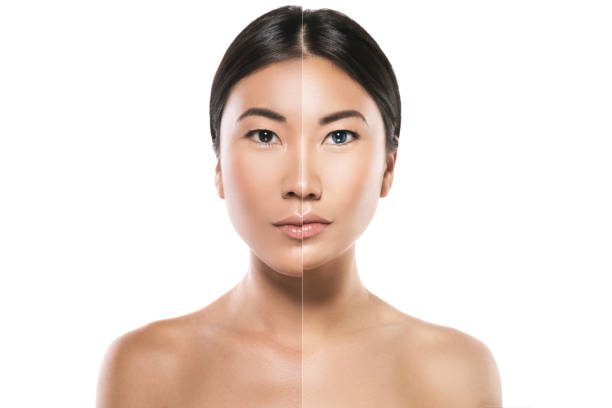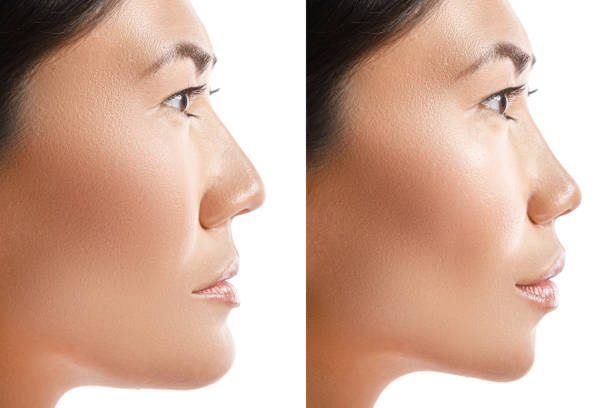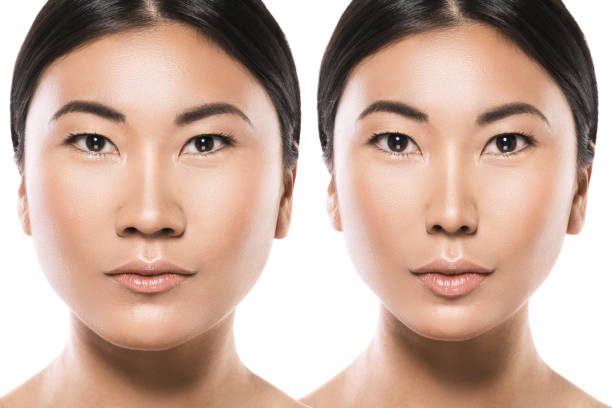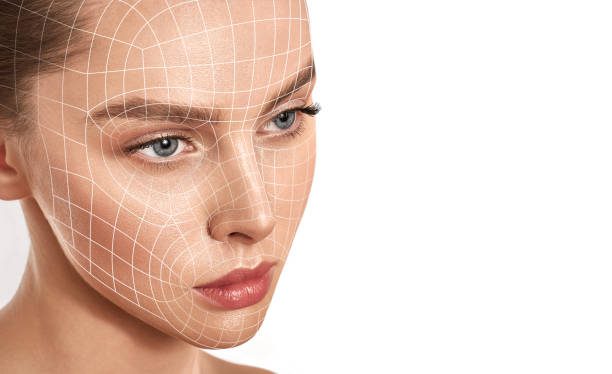This content is for informational and educational purposes only. Always consult a qualified healthcare provider.
Last Updated on February 22, 2024 by Grace Oluchi
In recent years, the desire for a more defined jawline has led to an increase in the popularity of V-line jaw surgery. However, many people have questions and concerns about the procedure. In this article, we will explore the top 5 frequently asked questions about V-line jaw surgery and provide detailed answers to help you make an informed decision about the procedure.
📋 Table of Contents
About.
V-Line jaw surgery is a cosmetic surgical procedure that aims to create a more defined and slimmer jawline, sometimes referred to as a “V-shaped” jawline. This procedure is popular in South Korea and other parts of Asia, where there is a cultural preference for a smaller, more delicate jawline.
The V-Line jaw surgery involves reshaping the jawbone to create a more narrow and tapered appearance. During the surgery, the surgeon may remove a portion of the jawbone, as well as the masseter muscle, which is responsible for chewing. The surgery may also involve repositioning the chin or cheekbones to create a more balanced facial profile.


The V-Line jaw surgery is typically performed under general anesthesia and takes several hours to complete. Recovery time can vary depending on the extent of the surgery, but patients typically need to take a few weeks off work or school to allow for proper healing.
As with any surgical procedure, there are risks and potential complications associated with V-Line jaw surgery, including infection, bleeding, and nerve damage. It’s important to choose a qualified and experienced surgeon and carefully consider the risks and benefits of the procedure before deciding to go forward with it.
It’s also worth noting that while V-Line jaw surgery can produce dramatic changes to the appearance of the jawline, it is a cosmetic procedure and not medically necessary. It should only be considered as an option for individuals who are in good health and have realistic expectations about the outcome of the surgery.
How does V-line jaw surgery work? And procedure.
The surgery involves reshaping the jawbone to create a more narrow and tapered appearance. Here’s how the procedure typically works:
- Anesthesia: The patient is given general anesthesia to ensure that they are asleep and pain-free during the procedure.
- Incisions: The surgeon makes incisions inside the mouth, typically along the gum line, to access the jawbone.
- Reshaping the jawbone: The surgeon uses a surgical saw or other tools to remove a portion of the jawbone and reshape it to create a more narrow and tapered appearance.
- Removing the masseter muscle: The surgeon may also remove a portion of the masseter muscle, which is responsible for chewing, to further slim down the jawline.
- Repositioning the chin or cheekbones: Depending on the patient’s facial structure, the surgeon may also reposition the chin or cheekbones to create a more balanced facial profile.
- Closing the incisions: Once the desired changes have been made, the incisions are closed with sutures or dissolvable stitches.
The surgery typically takes several hours to complete and patients may need to stay in the hospital overnight for observation. Recovery time can vary depending on the extent of the surgery, but patients typically need to take a few weeks off work or school to allow for proper healing. As with any surgical procedure, there are risks and potential complications associated with V-Line jaw surgery, including infection, bleeding, and nerve damage. It’s important to choose a qualified and experienced surgeon and carefully consider the risks and benefits of the procedure before deciding to go forward with it.
Risks and side effects.
As with any surgical procedure, there are risks and potential complications associated with V-Line jaw surgery. Some of the risks and side effects of the surgery can include:


- Infection: There is a risk of infection with any surgery, and V-Line jaw surgery is no exception. Patients are given antibiotics before and after the surgery to reduce infection risks..
- Bleeding: Patients may experience bleeding during or after the surgery, which can sometimes require additional treatment or surgery.
- Nerve damage: The surgery involves working near nerves in the face, which can result in damage during the procedure. This can result in numbness, tingling, or weakness in the face.
- Swelling and bruising: Patients will experience swelling and bruising after the surgery, which can last for several weeks or even months.
- Pain and discomfort: Patients may experience pain and ache after the surgery, management can be with pain medication.
- Unsatisfactory results: While most patients are satisfied with the results of V-Line jaw surgery, there is a risk that the desired outcome may not be gotten or that the patient may be unhappy with the results.
It’s important to choose a qualified and experienced surgeon and carefully consider the risks and benefits of the procedure before deciding to go forward with it. Patients should also carefully follow all post-operative instructions to ensure proper healing and lower the risk of complications.
What to expect after V-line surgery.
After V-Line surgery, patients can expect some discomfort and swelling for several days to a few weeks. Here’s what you can generally expect after the surgery:
- Pain and discomfort: You will experience some pain and discomfort after the surgery, pain medications prescribed by your surgeon can manage it.
- Swelling and bruising: Swelling and bruising are common after the surgery and can last for several weeks. You can help reduce swelling by applying ice packs to your face for 20 minutes at a time, several times a day.
- Restricted diet: You will need to follow a restricted diet for several weeks after the surgery, which may include liquids or soft, pureed foods.
- Activity restrictions: You will need to avoid strenuous activity and exercise for several weeks after the surgery to allow for proper healing.
- Follow-up appointments: You will need to attend follow-up appointments with your surgeon to monitor your progress and ensure proper healing.
- Oral care: You will need to be extra careful with oral care during the recovery period, including brushing your teeth gently and avoiding hard or crunchy foods that can irritate the incisions.
It’s important to carefully follow all post-operative instructions provided by your surgeon to ensure proper healing and minimize the risk of complications. While recovery time can vary depending on the extent of the surgery, most patients can expect to return to work or school within a few weeks.
How to find a provider.
If you are considering V-Line jaw surgery, it’s important to find a qualified and experienced provider to perform the procedure. Here are some steps you can take to find a provider:
- Research providers: Start by researching providers in your area who offer V-Line jaw surgery. You can search online or ask for recommendations from friends, family, or your primary care physician.
- 2.Check credentials: Once you have a list of potential providers, check their credentials and qualifications. Look for providers who are certified in plastic surgery or oral and maxillofacial surgery.
- 3. Read reviews: Look for online reviews from other patients who have had the procedure with the providers you are considering. This can help give you a better sense of their experience and outcomes.
- 4. Schedule consultations: Schedule consultations with several providers to discuss your goals and ask questions about the procedure. This will help you get a better sense of their approach and determine the best provider fit for you.
- 5. Consider cost: V-Line jaw surgery can be expensive, so it’s important to consider the cost and whether it fits within your budget. Be sure to ask about financing options and whether your insurance will cover any portion of the cost.
Remember that choosing a qualified and experienced provider is essential for achieving a safe and successful outcome with V-Line jaw surgery. Take the time to do your research and choose a provider who you feel comfortable with and confident in.
Before and After Pictures.




What is V-line jaw surgery?
V-line jaw surgery is a cosmetic procedure that involves reshaping the jawline to create a more defined “V” shape. This is achieved through a combination of bone reduction and soft tissue removal.
How is V-line jaw surgery performed?
The surgery is typically performed under general anesthesia and involves making incisions inside the mouth to access the jawbone. The surgeon then uses a saw or other tools to reshape the jawbone and remove excess tissue.
Is V-line jaw surgery painful?
As with any surgical procedure, there is some discomfort associated with V-line jaw surgery. However, most patients report that the pain is manageable with pain medication and subsides within a week or two.
What are the potential risks and complications associated with V-line jaw surgery?
As with any surgical procedure, there are risks and potential complications associated with V-line jaw surgery. These may include bleeding, infection, nerve damage, and asymmetry of the jawline.
What is the recovery process like after V-line jaw surgery?
Recovery from V-line jaw surgery typically takes several weeks. During this time, patients may experience swelling, bruising, and discomfort. It is important to follow your surgeon’s post-operative instructions closely to ensure proper healing.

